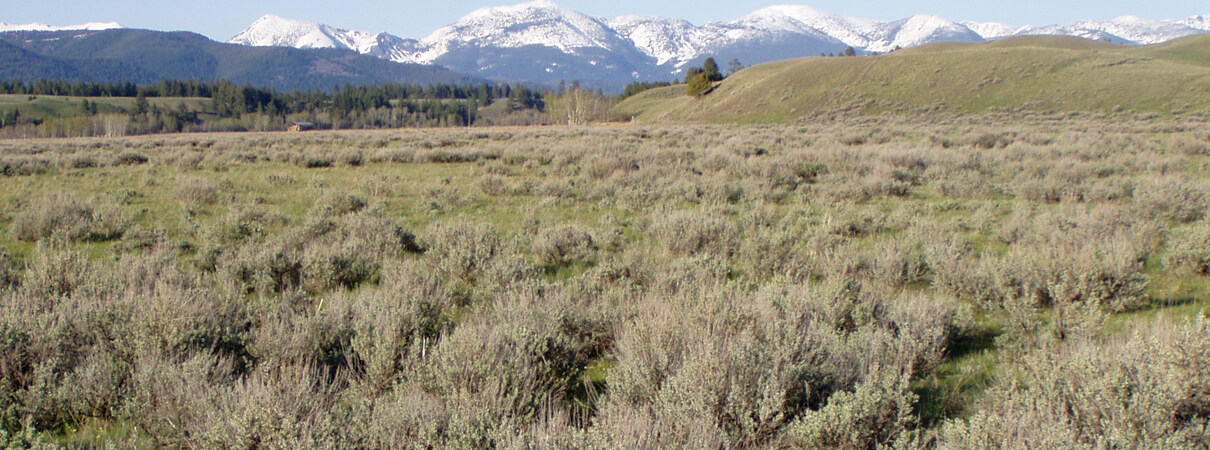Greater Sage-Grouse Need Better Protections, Not More Development
Editor's Note: This week, the U.S. Department of the Interior is expected to announce a formal notice of intent to substantially alter existing federal conservation plans for Greater Sage-Grouse across 10 states. The existing plans were put in place in 2015 after a collaborative consultation process that included Western governors, ranchers, tribal authorities, industry representatives, and conservationists.
On Sept. 28, on the cusp of this expected announcement, we asked Steve Holmer, American Bird Conservancy's Vice President of Policy, about the proposed changes, what's at stake, and what action people can take.
Why is the Department proposing to change the existing sage-grouse management plans, which were put together with input from many stakeholders over five years of planning?
Several states and interest groups want the grouse management plans to allow increased uses — especially energy development — in priority grouse habitat. The goal of these groups seems to be to tip the balance toward greater development and away from habitat conservation. Now, in the upcoming comment period, stakeholders will have an opportunity to weigh in on whether they support increased development on grouse lands, or whether the existing plans strike the right balance.

Greater Sage-Grouse by Kenneth Rush/Shutterstock
What changes is the Department of the Interior proposing to make to the existing plans?
In addition to opening up core areas of grouse habitat to development, Interior is suggesting conservation strategies like captive breeding. Studies have shown that while this technique is great for some species, it just doesn't work well for sage grouse. Another suggested strategy is predator control — for example, eliminating ravens and other potential predators that could prey on young grouse.
Both of these ideas are misplaced and a waste of taxpayer dollars, and we said as much in a letter to Secretary of the Interior Ryan Zinke. Many other conservation and wilderness groups — including Advocates for the West, the Endangered Species Coalition, Montana Wilderness Association, Nevada Conservation League, New Mexico Sportsmen, and local chapters of the Audubon Society and the Sierra Club — joined us in recommending that the administration stay the course on sage-grouse conservation.
Why would the proposed changes be bad for the birds?
Currently, the plans are the species' only hope. Since 2014, the Greater Sage-Grouse has been exempted from potential Endangered Species Act (ESA) listing. In 2015, providing the grouse with ESA protection was found to be “not warranted” on the basis of the existing plans. Given ongoing population declines, habitat loss, anticipated development, and the potential weakening of the conservation plans, it is essential that the safety net provided by the ESA be restored.
We view the current, hard-won plans as providing a minimum level of support for the grouse. If they are weakened, there's a serious risk that we will lose this iconic species for good. You have to remember that Greater Sage-Grouse has suffered a 98 percent population decline. More than half the bird's historic range is now devoid of this once-abundant species.

Sage habitat in the Blackfoot Valley. Photo by Dan Casey
The existing plans need a chance to work. The Natural Resources Conservation Service's Sage Grouse Initiative has already made significant progress to improve grouse habitat on private working lands, which are critical to the conservation of this and many other at-risk species.
But it's about more than the bird. The existing grouse conservation plans could mark the last chance to save the wide-open spaces of the West.
Are other grassland birds also at risk if the proposed changes go into effect?
Yes, definitely. More than 350 other species of wildlife depend on the sagebrush ecosystem, including Sagebrush Sparrow, Sage Thrasher, and Brewer's Sparrow, which have been designated as species of conservation concern, as well mule deer and antelope.

Sage Thrasher by Martha Marks/Shutterstock
What can people who care about sage-grouse do to help?
American Bird Conservancy is urging all citizens to contact the administration and their members of Congress. We're asking for their support for grouse conservation by opposing the administration's proposed changes, as well as harmful legislation that would overturn the plans and undermine the ESA.
All citizens should also register their comments during the upcoming comment period. Details on this are forthcoming, and we will share updates as we get them.


















































